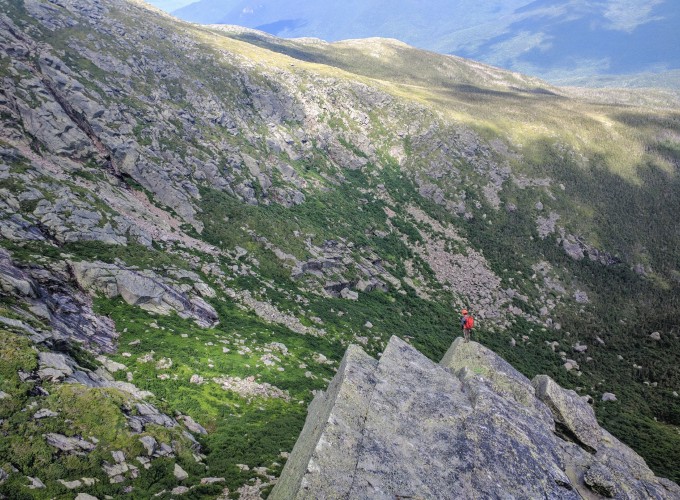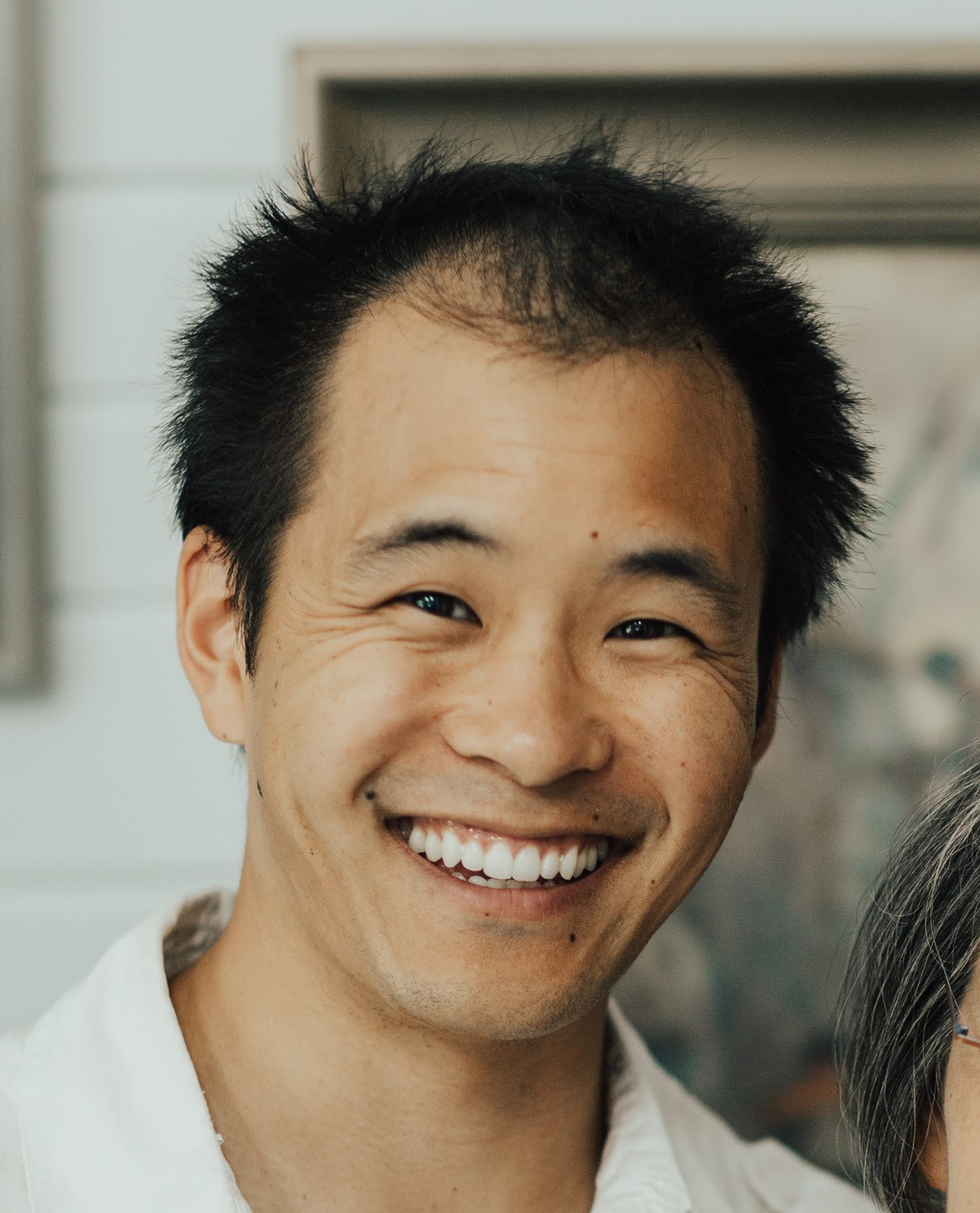Clearly a bad idea.
In the White Mountains of New Hampshire, two hikes reign supreme: the Presidential Traverse and the Pemi-loop. The first is a 22-mile hike of the Presidential Range, the highest and most rugged White Mountain peaks. The latter is a 32-mile jaunt through the Pemigewasset Wilderness, including the very popular Franconia Ridge Traverse, another exposed section of the Whites. These hikes often appear on lists of the most difficult and rewarding hikes in the United States. Doing either is considered an impressive accomplishment.
Through trip reports and friends in MIT’s Outing Club, I had heard of another hike called the Superverse. The idea was simple: hike the best of the Whites in one shot. That meant combining a Presidential Traverse and a Franconia Traverse into a single day hike of 50+ miles. It sounded grueling, exhausting, and pointless. I couldn’t wait to give it a try.
But I began spending a lot more time climbing, and as I rifled through guidebooks, I had an idea. A Superverse may combine the best of the hiking in the White Mountains, but what about all the granite? How could a Superverse be the best of the Whites without any rock?
From my map, a new route was obvious. One could link the classic seven-pitch climb Northeast Ridge of the Pinnacle on Mt. Washington, hike half the presidential traverse, cross the Pemigewasset Wilderness to Franconia Ridge, hop over to the base of Cannon Cliff, and climb the ultra classic Whitney-Gilman Ridge. Conceivably, it could be done in one push. A Climber’s Superverse.
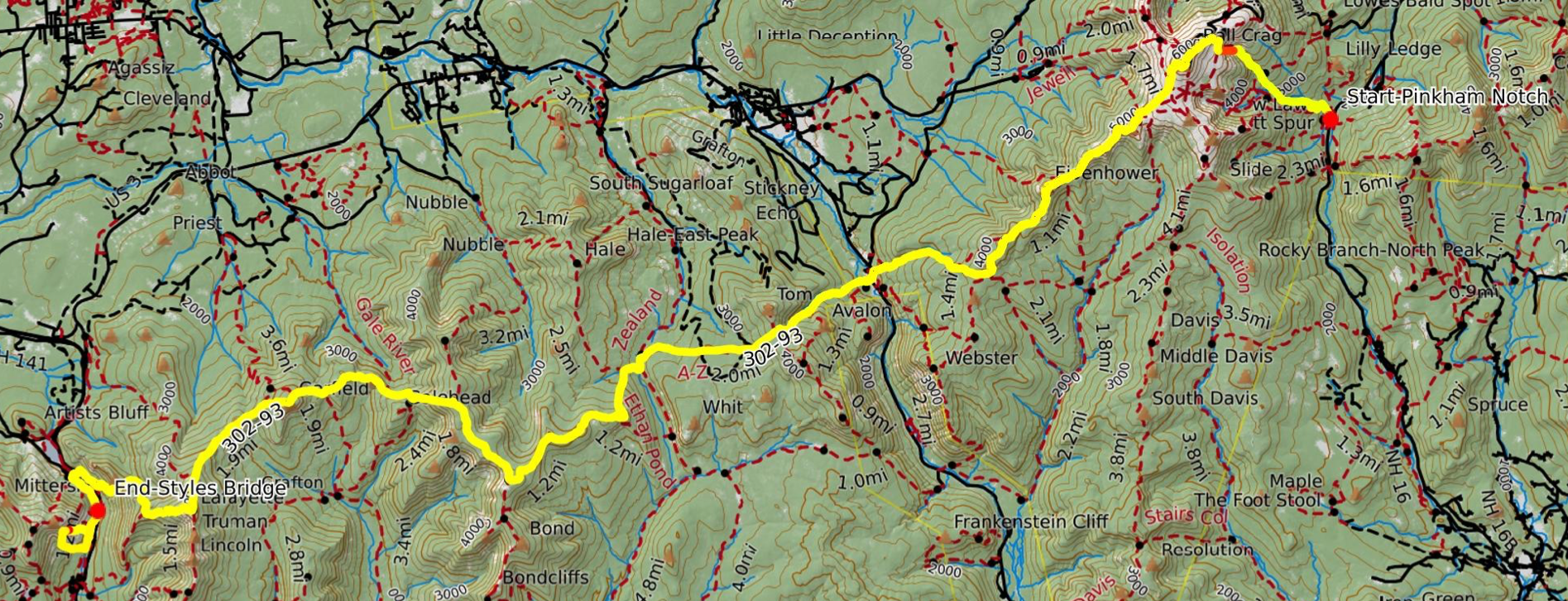
The overall route of the Climber’s Superverse, traversing the White Mountains
This was clearly a bad idea.
For one, climbing requires a good amount of crap, meaning heavier packs for the significant mileage and elevation gain and loss. For another, climbing (usually) involves much greater risks than hiking. Although rockfall on Cannon (New England’s favorite pile of choss) is not uncommon, the vast majority of climbing accidents are from miscommunications, misjudgments, or mistakes, all of which would be amplified by trying to climb after hiking and climbing for such a long time without sleeping. Finally, the length of the journey would almost certainly involve moving at night, which means darkness, getting lost, and getting sleepy. In fact, to do the climbing during daylight would require climbing the Pinnacle during the afternoon, hiking through the night, and climbing Cannon the next morning.
Too bad I was already stoked to do it. And I knew one person stupid enough to do it with me.
That is the best idea I’ve ever heard
I met Chris Saulnier through MITOC, where we were both ice/rock/hiking leaders. He was well regarded in the club as an experienced trad climber and alpinist.
In 2016, he and his friend Jacob Sargent set out to break the record for a White Mountains directissima—hiking all 48 of the 4,000-footers. The fastest known time was 10 days, and they hoped to do it in 7, meaning 40+ miles a day. Unfortunately, extreme wind and rain drove them off the Presidential Range early in their attempt, and new jobs prevented another try.
I first contacted Chris about doing a Climber’s Superverse in 2015. His reply was unequivocal. “Nathaniel, that is the best idea I’ve ever heard. I’m 100% in.”
So the team was set. But the two-body problem with MIT PhD students was significant. Add in the desire for long days near the solstice, and it would take us two years to find a window.
When we finally found a free weekend, we didn’t hit the dates with the best preparation. Both of us had started focusing more on climbing and less on hiking. A couple of weekends before our planned date, we were both on a trip to the Shawangunk Mountains (aka, the Gunks) in New York, one of the premier climbing areas in the Northeastern US. During dinner one night, Chris asked me what I had been doing to train for the Superverse. He laughed with relief when I replied “next to nothing.”
“We are going to get destroyed,” he chuckled. His tone was relaxed, but we were obviously both a little worried. Over the next couple of days, he would run a half marathon, and I would run 10 miles with a weighted backpack. I think we both hoped it would be enough.
The Superverse
In the days leading up to our weekend window, the weather looked questionable. Sunday was clear, but Saturday had a 60% chance of thunderstorms in the afternoon. We decided to go for it and back off if the weather turned.
We met on the morning of July 15, 2017. Our friends Sally Miller and Neil Titchner were kind enough to run logistics. They intended to do the climbing parts, skipping the overnight hike. After a few hours in the car, Chris and I started at the Pinkham Notch trailhead at 12:19pm, heading up toward Huntington’s Ravine.
Thinking back on it, I am amazed how great we felt during that first afternoon. We cruised smoothly up to the NE Ridge of the Pinnacle under clear blue skies, celebrating the lucky weather. We made it to the base of the Pinnacle in 1 hour and 17 min and began the first pitch free solo. The climbing was fun, although the route is not all that defined.
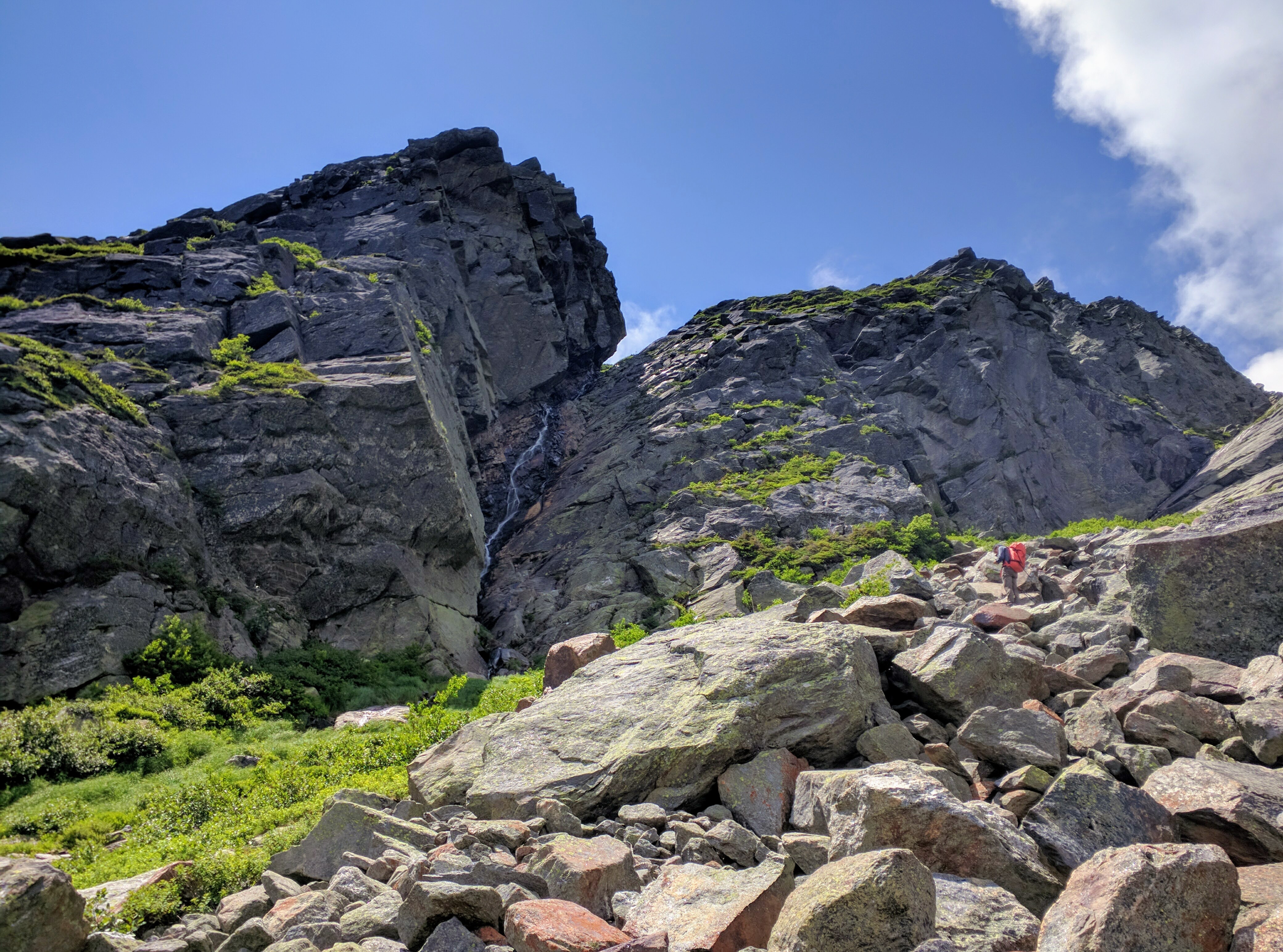
The approach to Pinnacle Buttress
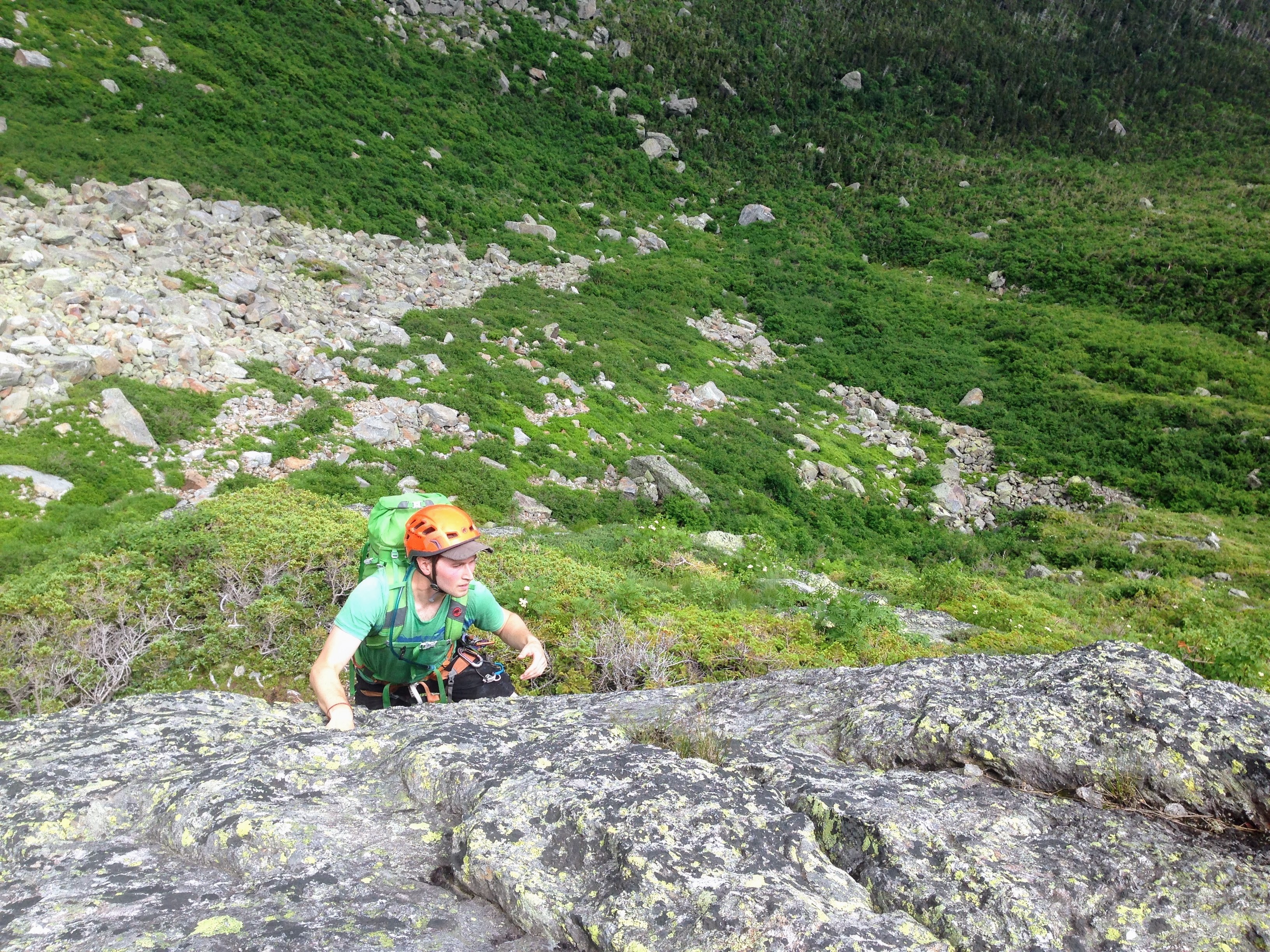
Chris free soloing on the NE Ridge of the Pinnacle
We continued up, pitching out a single pitch of 5.7 or 8 and simul-climbing the rest. Toward the top, I found Chris staring over the edge of the arête with a puzzled look. “I think that’s the fairy tale traverse,” he said, pointing down at the arête’s face between us. We backtracked, walked the traverse, and continued to the top.
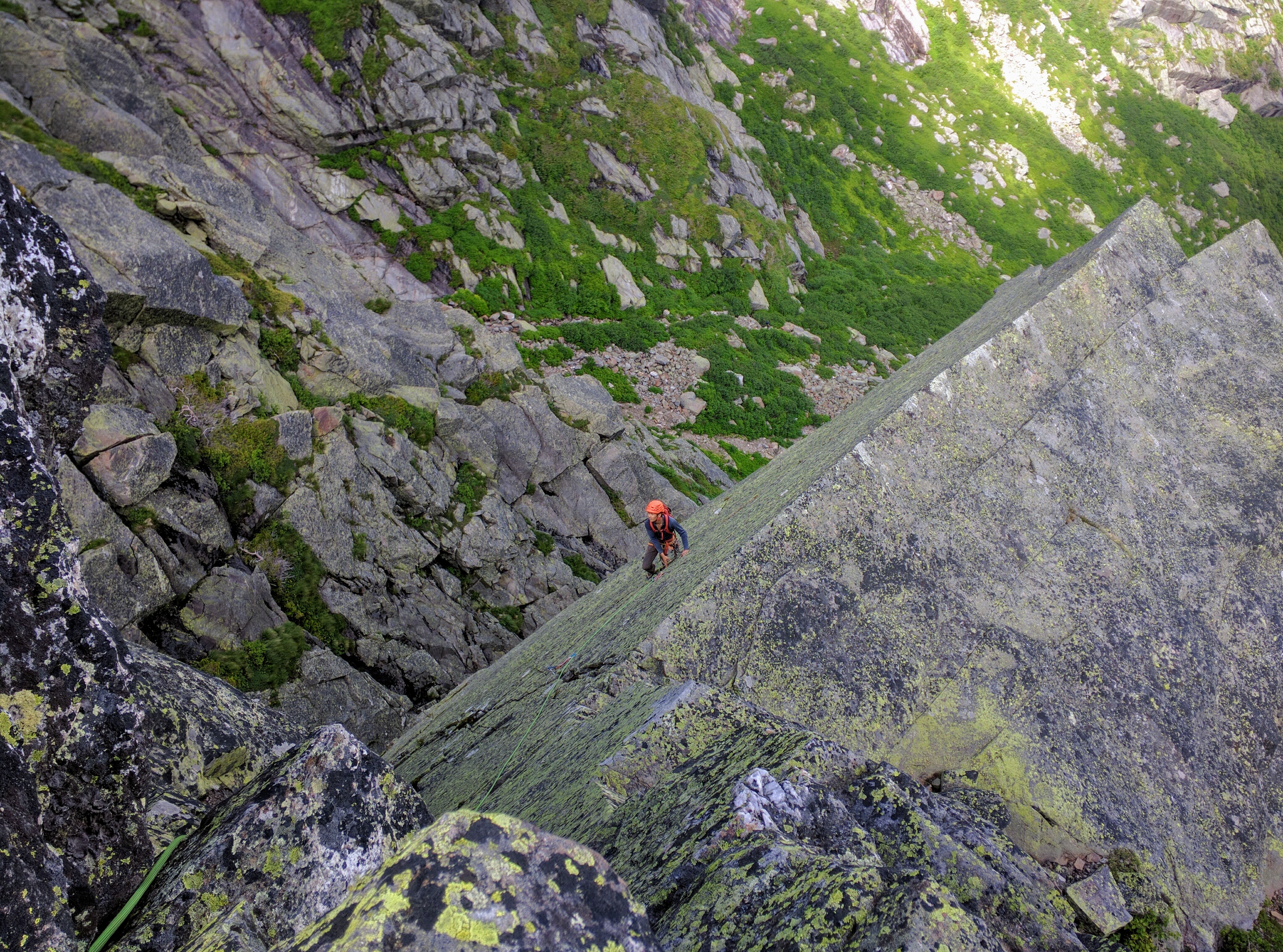
Following the Fairy Tale Traverse
At the top, we returned to hiking mode, and we were off!
After focusing on climbing for the past year, it felt great to hike again. Our legs were fresh, the weather was cool, and we were flying with steam, passing groups at a quick pace. Even with the trad rack and rope, the packs felt comfortable, not burdensome. We stopped by the Lake of the Clouds hut to snack, and a couple folks asked where we were headed. In true White Mountains style, each person we talked to seemed either underwhelmed or uncomprehending. Responses to our itinerary ranged from “Ah, so like a hut traverse” to “That sounds nice.” Gotta love the Granite State. One really has to go big to impress around here.
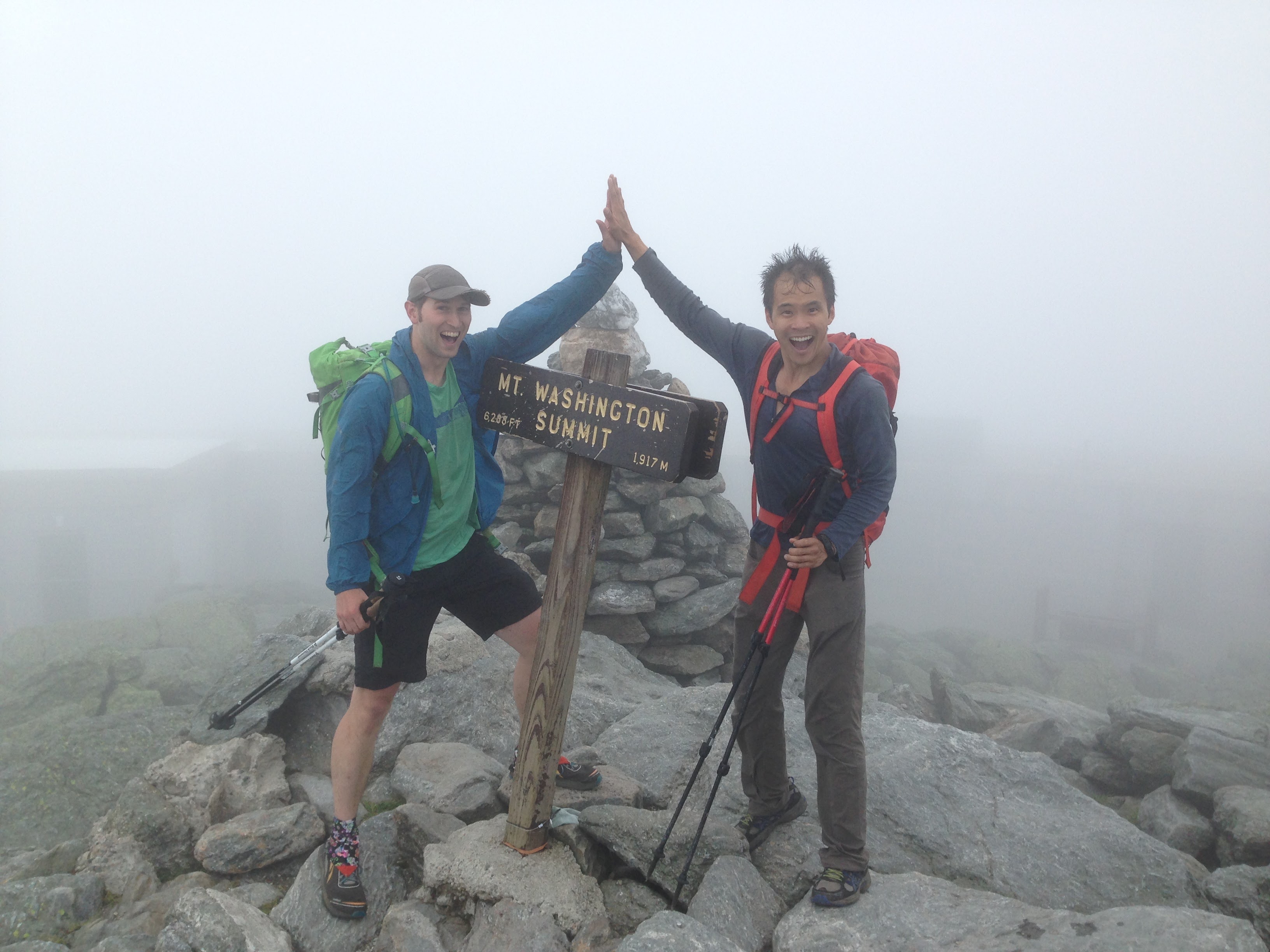
Following the Fairy Tale Traverse
As we descended from Monroe, we hiked into a downpour. The rain drove strong and cold, and soaked both of us immediately. I regretted not bringing another pair of socks. The rain certainly brought down my spirits. For the next 25 miles, my feet would be wet, my joints would be cold and creaky, and our trail would be muddy.
We reached the Highland Center and squeezed out our socks. I snacked on a new protein-fat concoction. Ultralight vegan protein options beyond bars aren’t great (no hard cheeses or jerky). So I tried a mixture of fried tempeh, peanut butter, hemp seeds, sunflower seeds, and nutritional yeast. It was extremely dense and resisted scooping with crackers. I won’t say it was delicious—and during the night I could barely eat it—but it was caloric and offset the sweetness of bars. I think fermented foods are a bit rough when you really need calories.
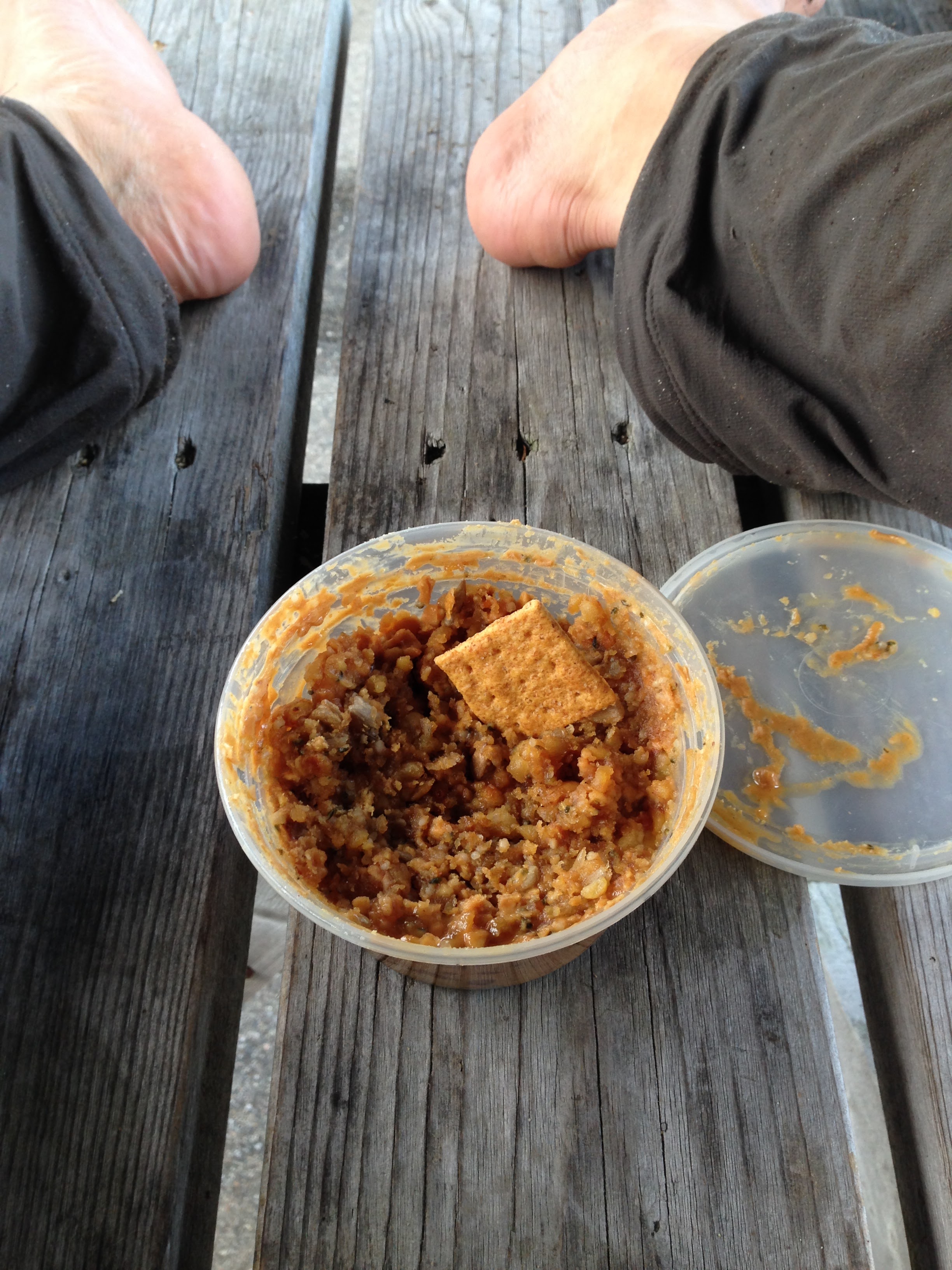
A vegan protein mix of tempeh, nutritional yeast, peanut butter, and hemp seeds. Dense.
During our break, we congratulated another pair who had just finished a Presidential Traverse, tugged back on our wet socks, and headed west under darkening skies.
The night wasn’t so bad. There is a zen sort of quiet when the headlamps come on and the only thing that exists is the five feet of trail ahead. The skies cleared to reveal a spray of stars, which would have been more enjoyable had the trail not been a minefield of mud puddles. In the dark, each step was a gamble one could not help but periodically lose, plunging a perhaps less wet foot back into the mud. We soon found ourselves in that state familiar to many hikers: robot mode. Only the trail and my desire not to step into calf-deep mud existed.
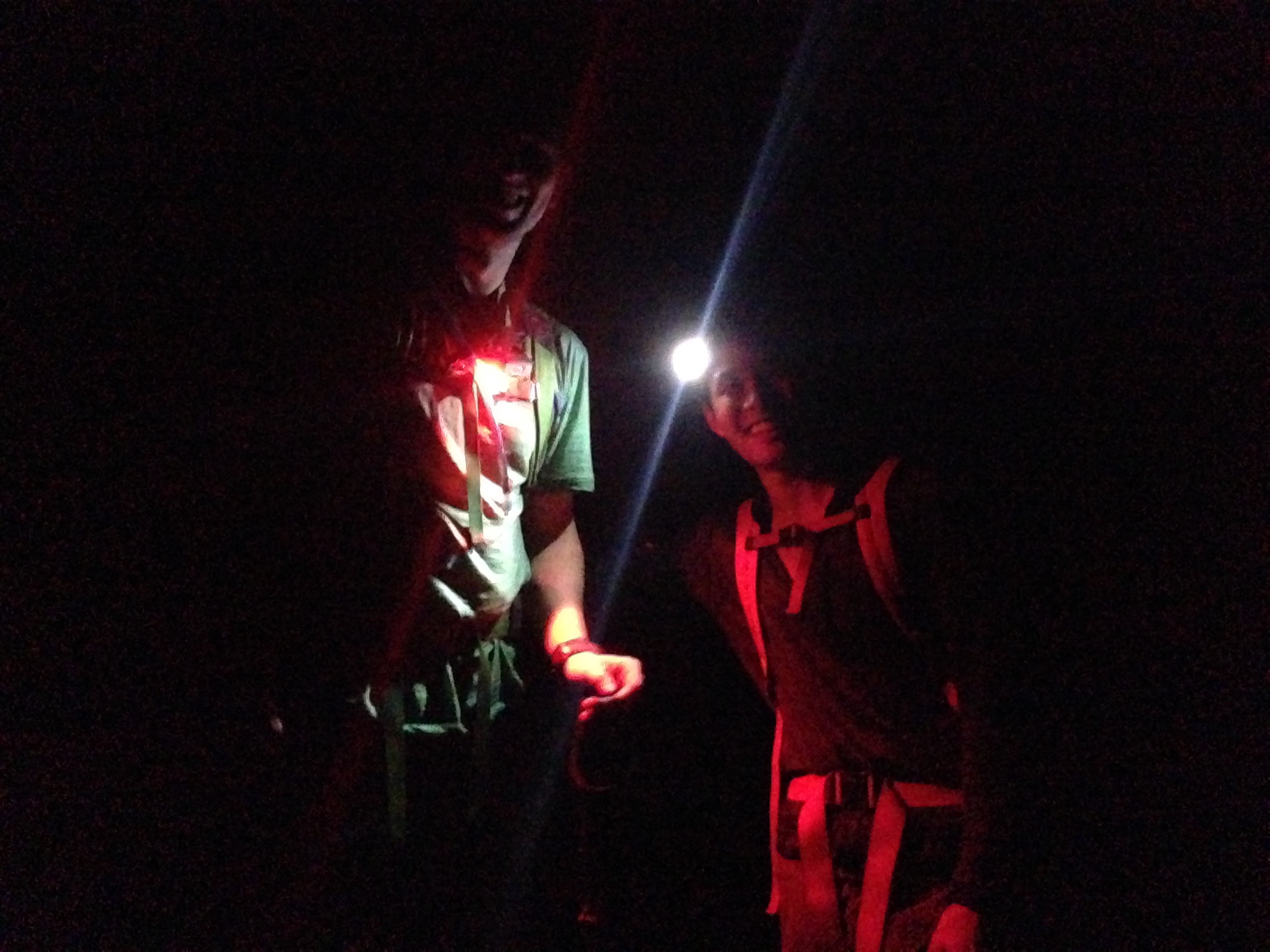
Headlamp hiking
We stopped at the huts to rest, trying not to disturb the people sleeping in common areas and on porches. We snacked and hydrated, elevating our sore legs. We admired the Milky Way as we repacked our bags and continued walking into darkness.
But before too long, the sky lightened. The sun rose as we approached Franconia Ridge, and we emerged above treeline into a beautiful, clear morning, easily spotting our final objective below us.

The summit of Lafayette
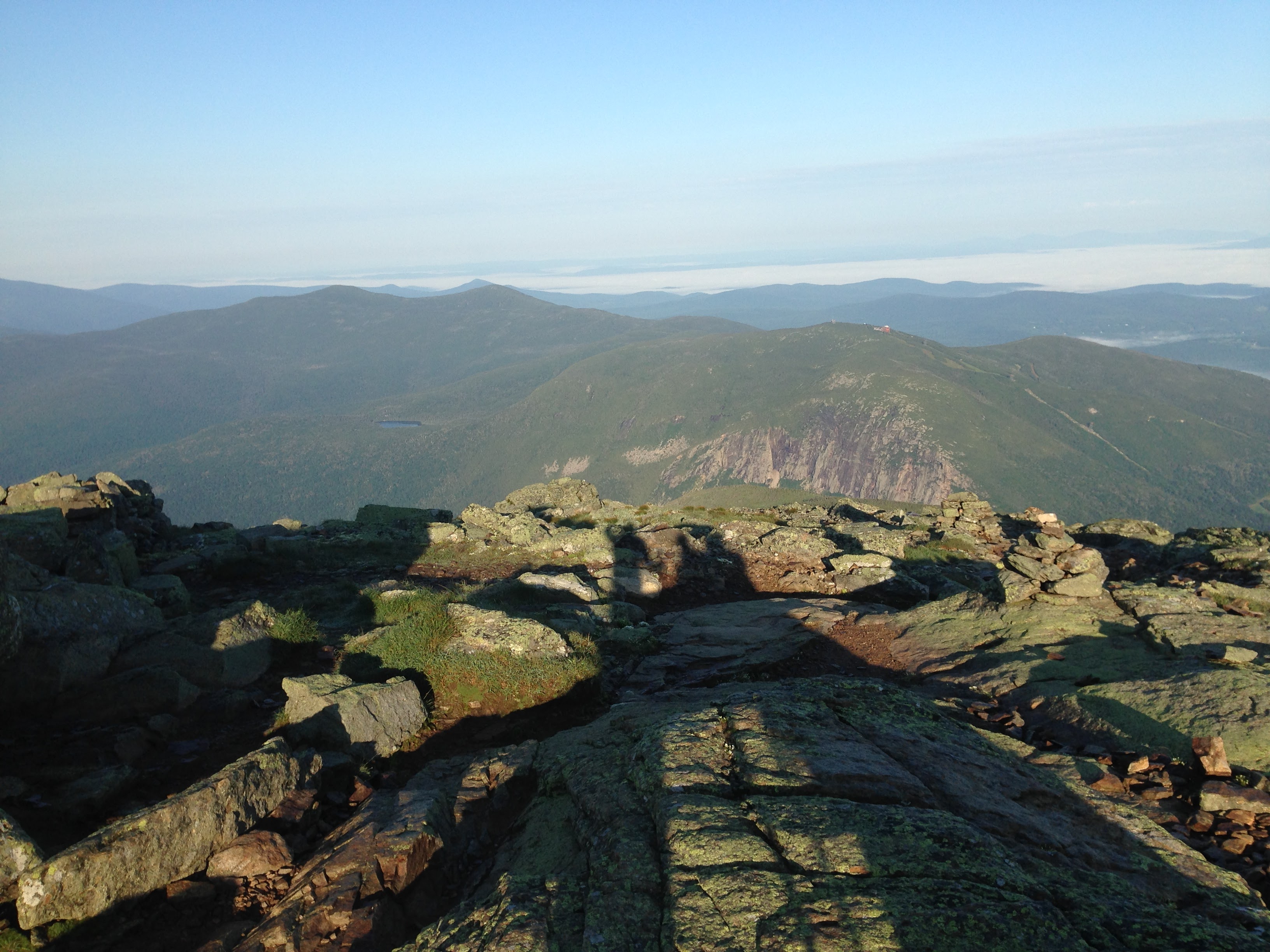
Cannon from Lafayette
It looked very small. And it was oh-so-far below us. Our knees and feet were sore from the hike. The rocky descents of the White Mountains trails are killer on the knees, and this hike involved the most downhill of any hike I had done in the Whites (the most uphill too, but that part was a joy and relief on the bones).
We got down the hill, and the prospect of a nice lie-down in the parking lot gave me a small second wind. We walked along the paved bike path to the Cannon Cliff parking lot, which was surprisingly uncomfortable after so many miles on trail. In the lot, we took 30 minutes to recuperate and discuss whether it was a good idea to continue.
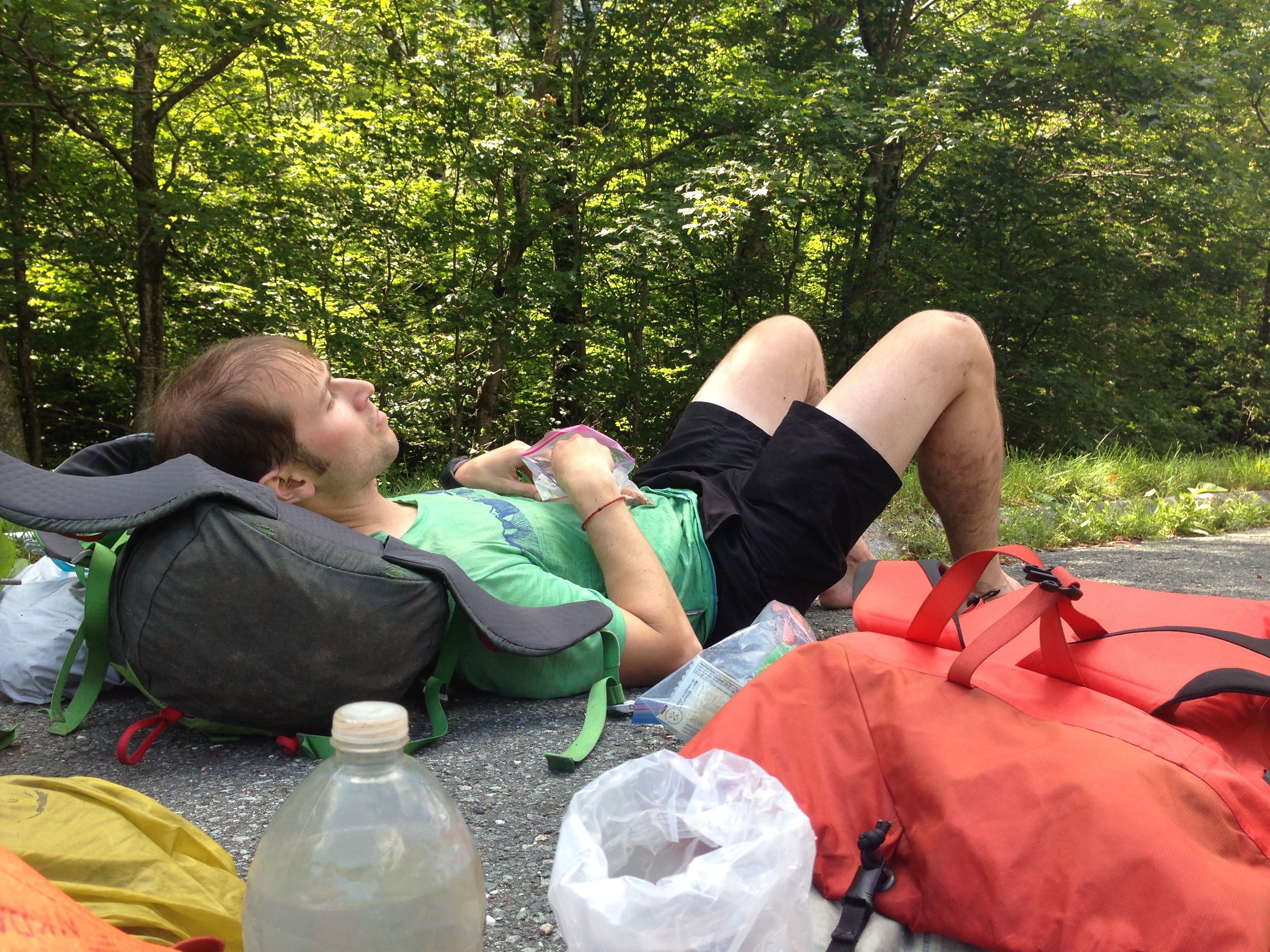
Resting in the Cannon Cliff parking lot
To both of our surprise, neither of us felt greatly mentally fatigued or sleepy. We were physically tired, and, more than anything else, our joints hurt. So, after our rest, we continued on, ambling gingerly out of the parking lot.
Up on Cannon, we ran into Sally and Neil. They didn’t seem overly concerned that we were about to kill ourselves, so we took that as a good sign. It was noon when we got to the base of Whitney-G, so I had hoped that the morning climbers would be well on their way and we wouldn’t have to wait for groups ahead of us. Unfortunately, we found a pair of climbers getting ready at the base of the climb. Even more unfortunately, we found a large human shit at the base of the climb too. Apparently, people don’t bring bags or find it worth the time to walk 10 min and bury their turds.
Chris led the first pitch and had some good shaky-leg going on the first placement. I’ve always thought that the first moves on Whitney-G are the crux. He also had to deal with my wonky gear system of multiple cams racked per carabiner, which is hard to adjust to if you are used to the normal one cam–one biner system.
So after the first pitch, we decided that I would lead the rest of them. I felt good climbing. I had been worried that my legs would be too tired to trust my feet in climbing shoes, but the muscles needed were so different that I felt fresh. In another stroke of luck, the pair of climbers ahead of us asked us to go first so that they could follow our route finding!
Feeling good didn’t last very long. Off the top of pitch one I chose a more direct finger/hand crack (it goes straight up from the belay, instead of around to the right), which was surprisingly slippery. I then proceeded to ignore the large 5.7 jug on the right side of the exposed step to the right, and instead tried to do some sort compression layback on smeary, difficult feet. I fell. On a pin.
And it held! Thanks, pin. Dangling in free space, I also saw the giant jug to the right of my face. I clambered back on, but unbeknownst to me (and perhaps him at the time), the impact of being pulled by the rope into the rock had bruised one of Chris’s ribs, an injury that would become clearer in the coming days.
With that excitement behind us, we linked the enjoyable 5.8 hand crack with the pipe pitch and made our way to the top out.
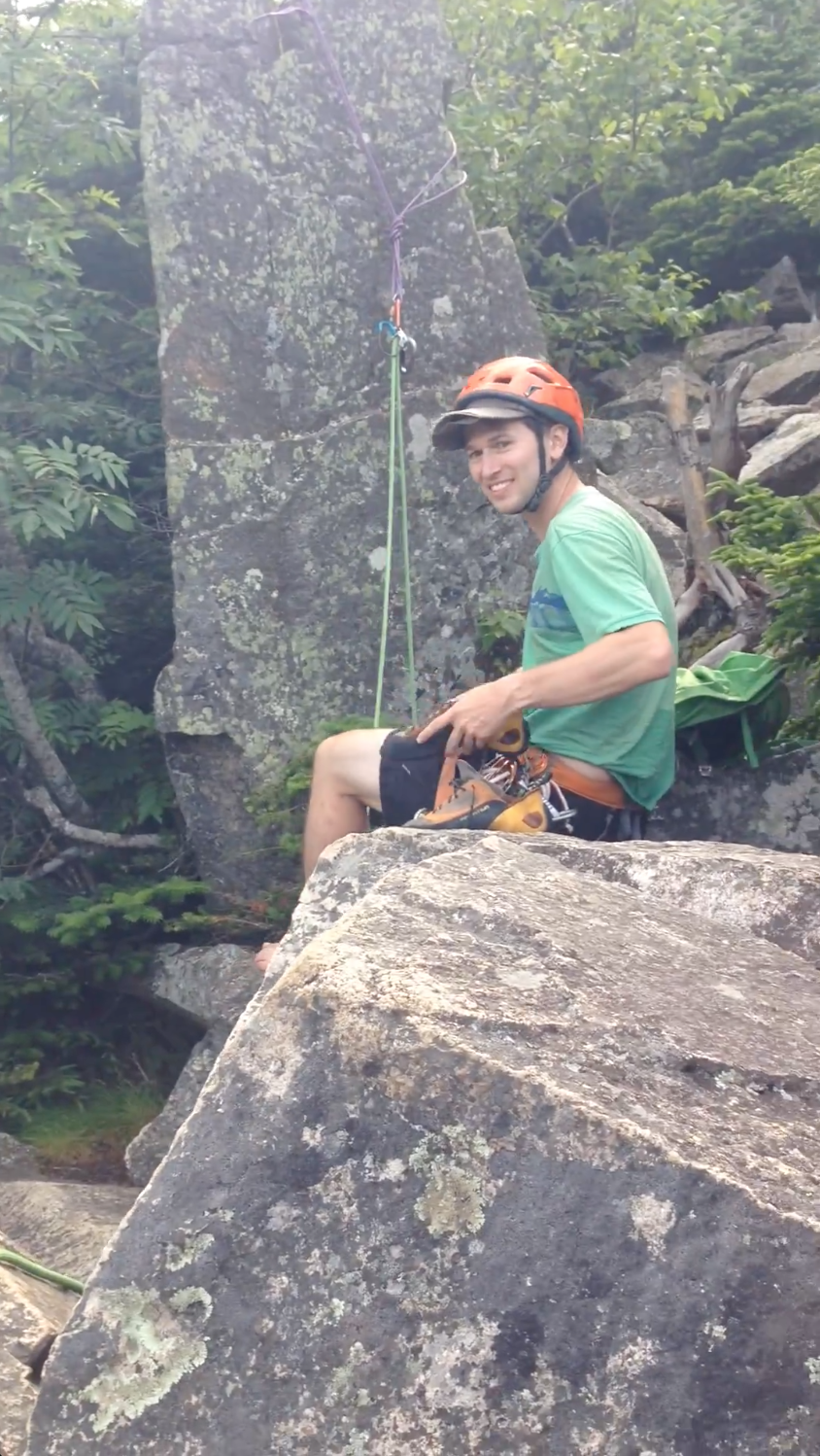
At the Whitney-G summit block
We had the smallest of celebrations, and then got back to the hard part. The descent was painful and slow. We trundled back into the parking lot at 4:37 pm, a little over 28 hours after our start time. And rather than getting a big greasy burger or a rack of pork ribs, Chris and I celebrated in style. By passing out.
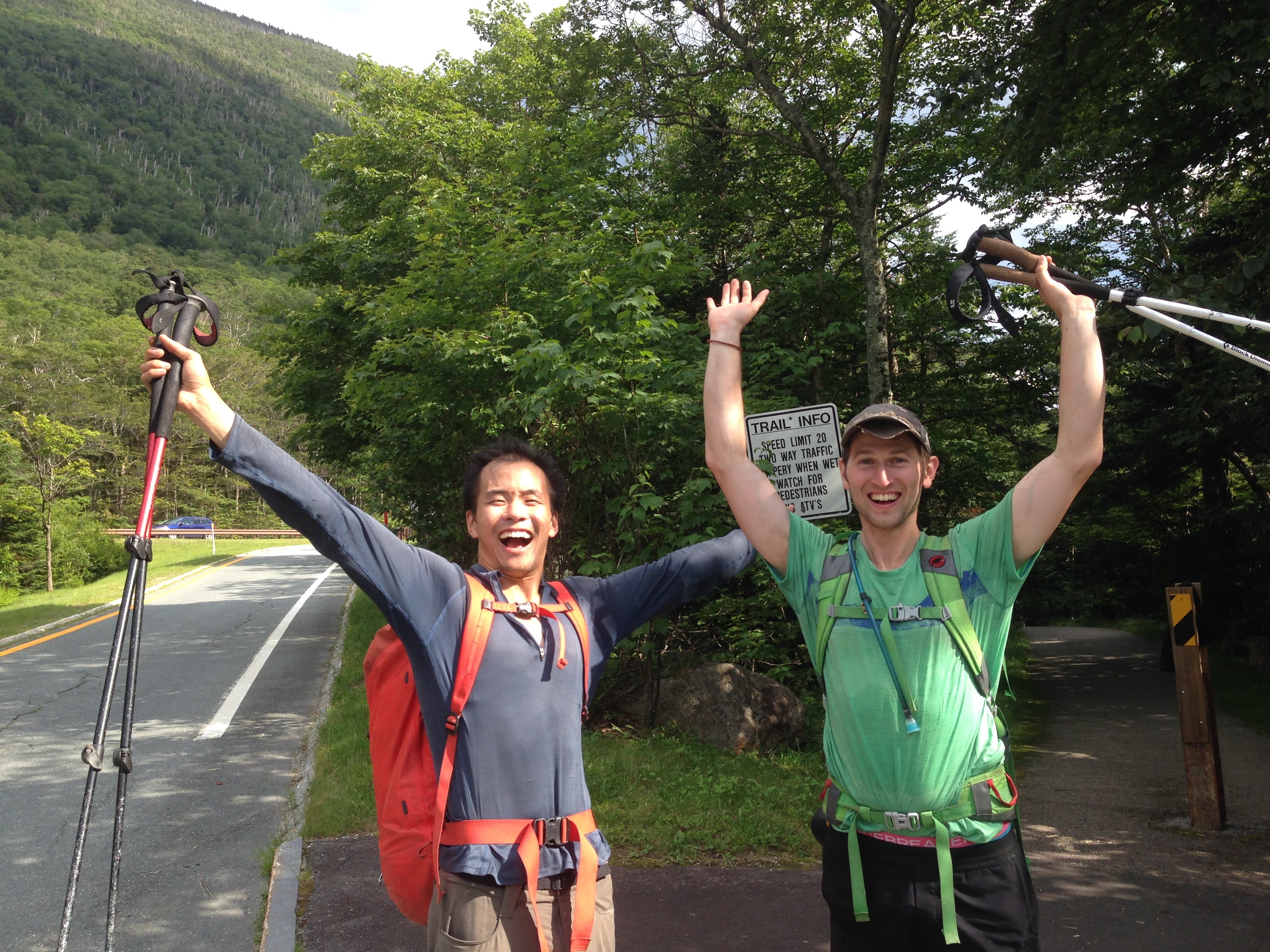
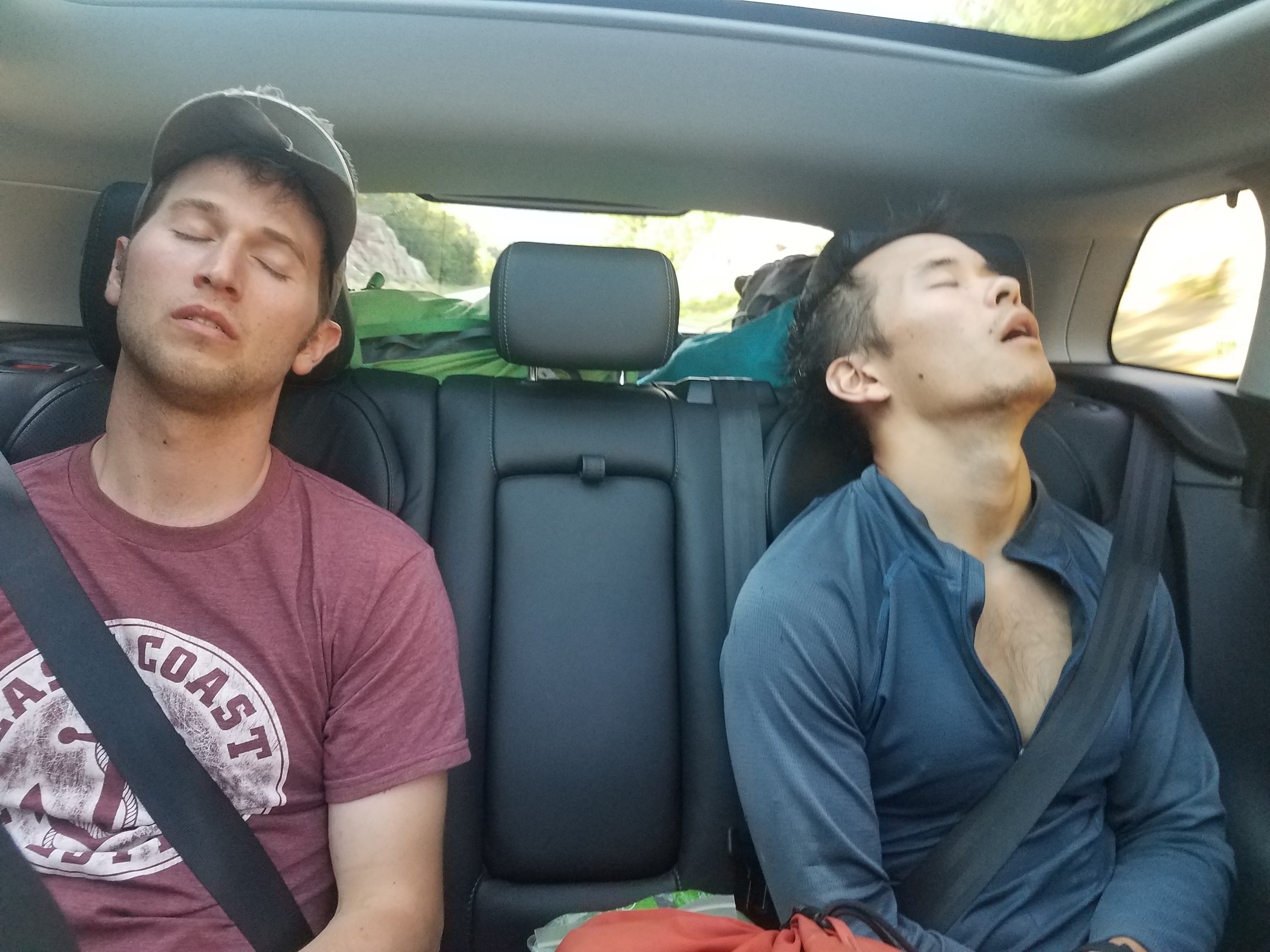
Looking back
So Chris and I did what might have been the first link-up of a climb on Pinnacle Buttress and Cannon Cliff. No doubt some salty New England climber will quickly disabuse me of this notion, but either way, I’m stoked that everything went so smoothly.
My primary takeaway from the trip was that a sleepless night alone won’t horribly compromise one’s ability to climb and be safe. Sure, we weren’t at peak performance, but I never felt unsafe. A big part of that was that we were never lost or stressed. On epics, I think what saps energy and good judgment is the stress of the situation. Here, our objective was clear, and the bail points were plentiful. We just had to do it.
Would I do it again? Hell, no. I value my knees more than that. Would I suggest it to others? Of course. Surely there are people out there as stupid as we are.
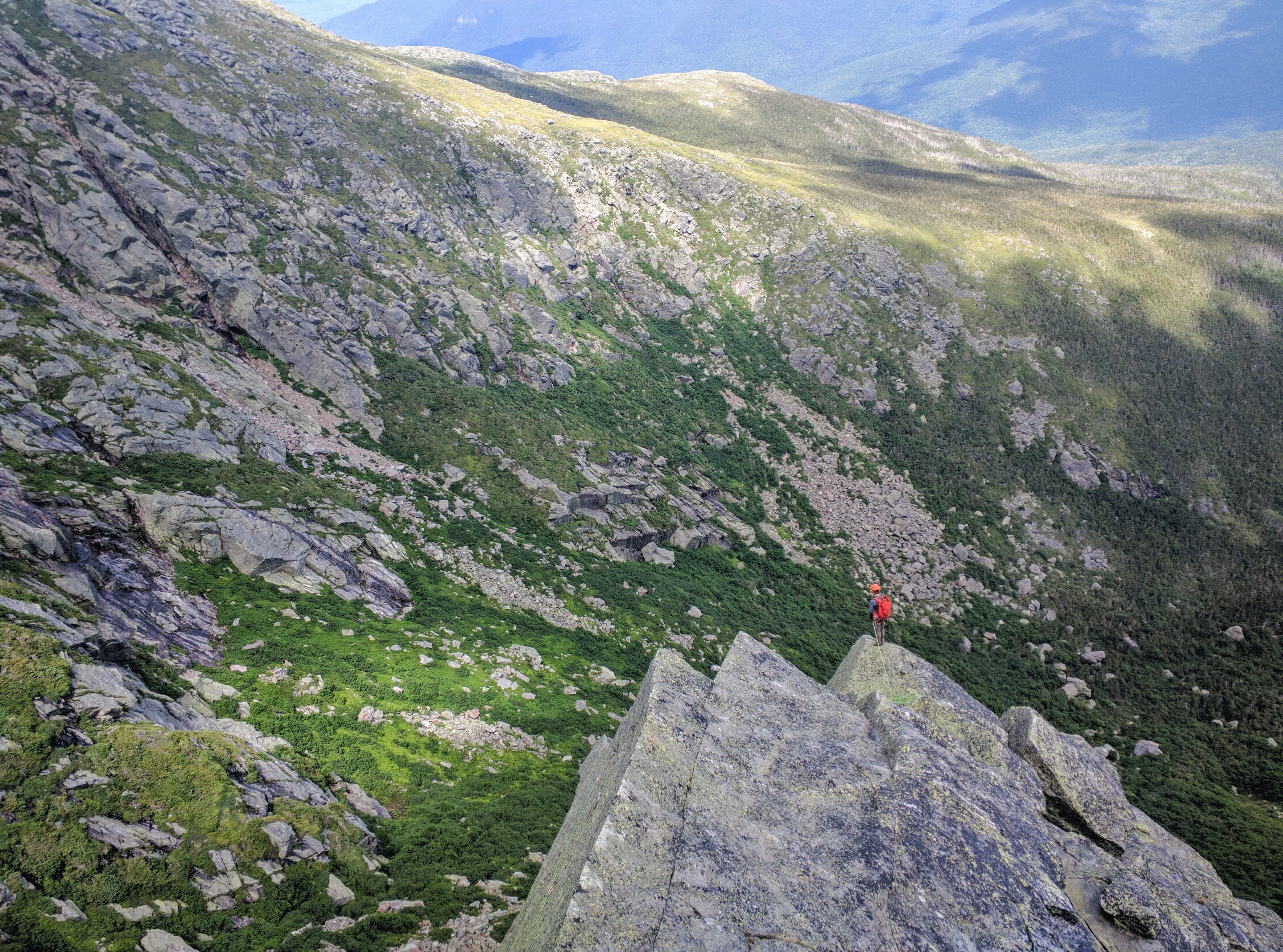
Looking for the Fairy Tale Traverse on Pinnacle Buttress
